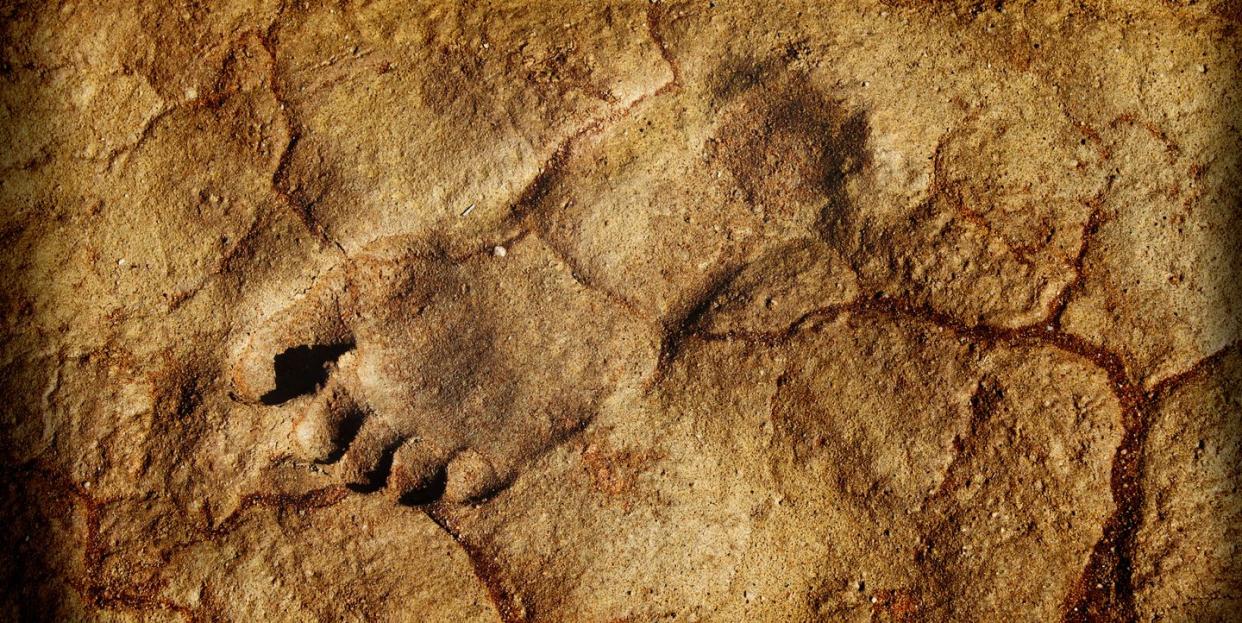Archaeologists Found 300,000-Year-Old Human Footprints That Explain Life Back Then

Fossilized footprints of Homo heidelbergensis located in Lower Saxony represent the oldest known footprints in Germany.
The 300,000-year-old site offers up footprints surrounded by animal tracks, including now-extinct elephants and rhinoceroses.
Footprints found near a lake offer a view into what life may have been like in Lower Saxony hundreds of thousands of years ago.
Scientists believe that 300,000 years ago in Lower Saxony, Homo heidelbergensis shared space with a now-extinct species of elephants (Palaeoloxodon antiquus) along a lakeshore, thanks to newly discovered footprints found in the fossilized mud. The freshly found footprints now represent the oldest ever seen in Germany.
In a study published in the journal Quaternary Science Reviews, the team highlights how the muddy shores of a lake located in an open birch and pine forest welcomed herds of elephants, rhinoceroses, even-toed ungulates, and, apparently, a family of “Heidelberg people,” a now-extinct species of human.
“This is what it might have looked like at Schöningen in Lower Saxony 300,000 years ago,” Flavio Altamura, a fellow at the Senckenberg Centre for Human Evolution and Palaeoenvironment at the University of Tübingen, says in a news release. “For the first time, we conducted a detailed investigation of the fossil footprints from two sites in Schöningen.”
He adds that, by piecing together the analyses of the site, the international team was left with insights into the ancient animals that once lived in the area—including the oldest human tracks known from Germany.
The team found a trio of human footprints that they believe represent a family, with two of the three total tracks likely belonging to youth. “Based on the tracks, including those of children and juveniles, this was probably a family outing rather than a group of adult hunters,” the study claims.
“Depending on the season, plants, fruits, leaves, shoots, and mushrooms were available around the lake,” Altamura says. “Our findings confirm that the extinct human species dwelled on lake or river shores with shallow water.”
This three-track snapshot into a family’s daily life on a lake shore could help fill out additional information about Homo heidelbergensis’s behavior and social composition. They could also provide data on Homo heidelbergensis’s interactions with other species, such as elephants and smaller mammals that also frequented the water.
The excitement over the human footprints overshadowed the fact that that researchers also found prints from a variety of now-extinct mammals. The extinct elephant species Palaeoloxodon antiquus, known for their straight tusks and weight of 13 tons, may have somehow interacted with the human family. Even the rhinoceros prints they found were intriguing—likely a footprint belonging to one of two Pleistocene species (Stephanorhinus kirchbergensis or Sephanohinus hemitoechus)—and would be the first-ever found in Europe.
The lakeshore in Lower Saxony has offered up new insight into the human and animal interactions of 300,000 years ago. And, according to the tracks, it’s family friendly.
You Might Also Like
